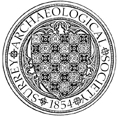St John’s Church, Wonersh
A watching brief by J English on building works at the church recorded a well-built wall of greensand blocks, incorporating pieces of moulding, below the present west wall, which probably represents a phase of rebuilding carried out in 1793/4. Below this was a row of chalk or clunch blocks, that appeared only for the width of the nave, and may relate to the Saxo-Norman church. (300)


